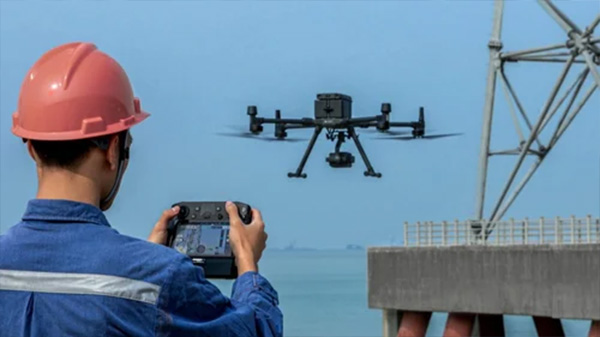- i.pathan@rogers.com
- 9 Haverson Blvd, Toronto ON M6M3J5

Drone inspections and surveys of complex areas such as tanks, vessels, structures, and pipelines deliver a more efficient, cost-effective and safer inspection process that can help mitigate risk and reduce the time of conventional activities.
Unmanned aerial vehicles (UAVs) or drones, are finding applications in an increasing number of industries. RCIS has added the use of drone and robotics to create an inspection program capable of acquiring data that would eliminate working in hazardous locations (flare tip, at height, rope access, confined space, offshore under platform, etc.) and costly additions such as scaffolds, manlifts, downtime, and personnel hours. Thanks to the data collected by drones, key energy stakeholders now have more actionable insights into energy-generating equipment, projects, and operations, empowering them to make smarter decisions.
Our Activities includes butnot limited to the following:
Inspections & Mapping
Inspections and mapping services for cell towers, cooling towers, oil and gas infrastructure, solar farms, wind farms, power lines, and nuclear power plants.
The drones are equipped with obstacle avoidance capabilities and can navigate very close structures, allowing them to capture minute details. They can take high-resolution images or video that clearly show cracks, damage, misplaced wires and other defects at elevations and angles that humans cannot access or maneuver. This allows for collection of more comprehensive data without exposing the inspection team to risks.
Confined Space Tank Inspections
Accessing and inspecting the confined spaces in the oil and gas industry, construction sites and other facilities can be challenging. You no longer have to send personnel into unsafe areas or dangerous confined spaces. Drones are designed to easily navigate and operate safely in a wide range of confined spaces while performing the inspection at a fraction of the time and cost of traditional methods.
Thermal Imaging
Thermal imaging detects leaks, faulty structures and energy loss in a fraction of the time it would take to manually inspect a property. Using drone thermal imaging can detect an area that may be prone to malfunction in the future.
HSSE
Safety and Hazardous analysis both visually and by the emerging AI technology for automated analysis.

